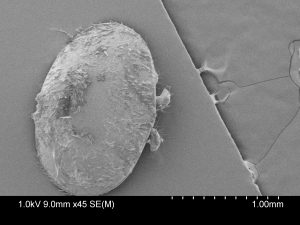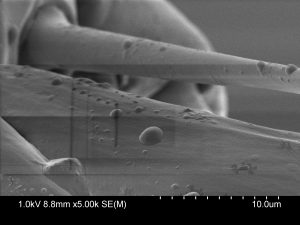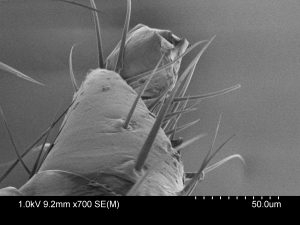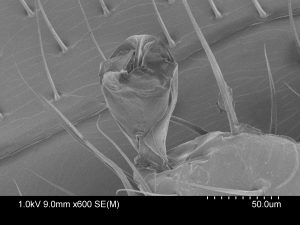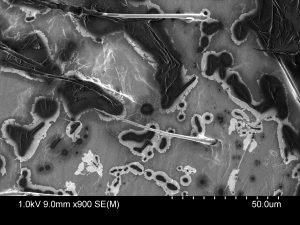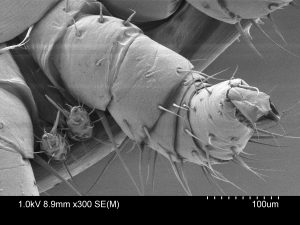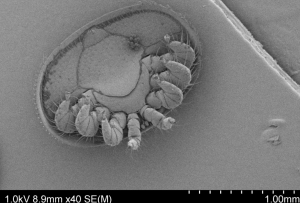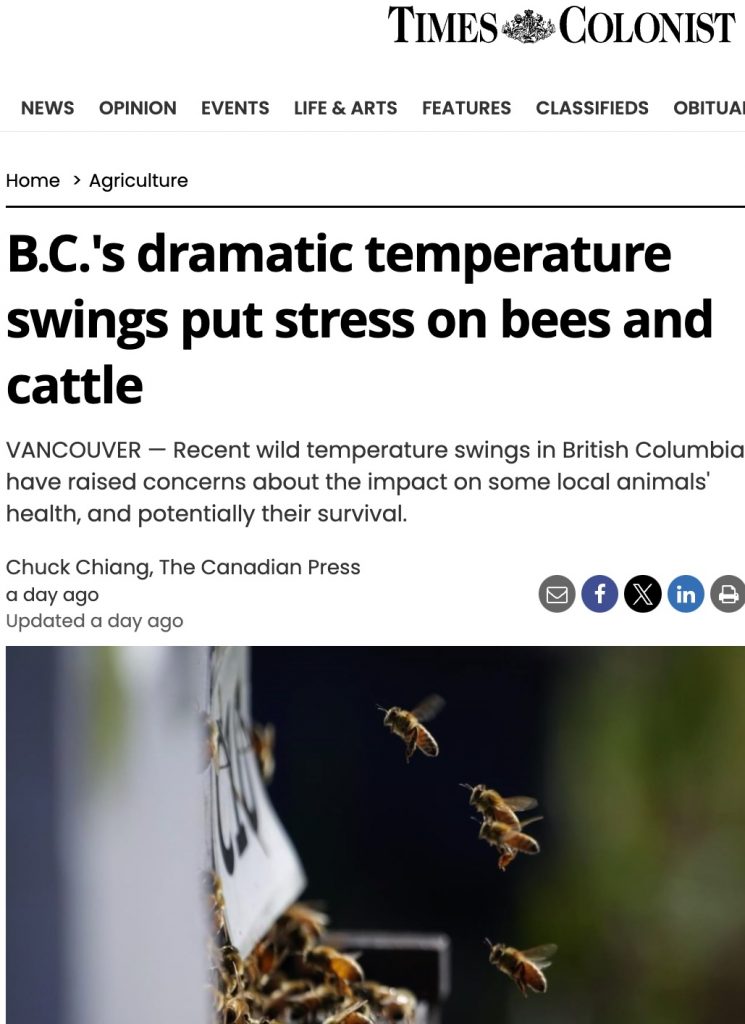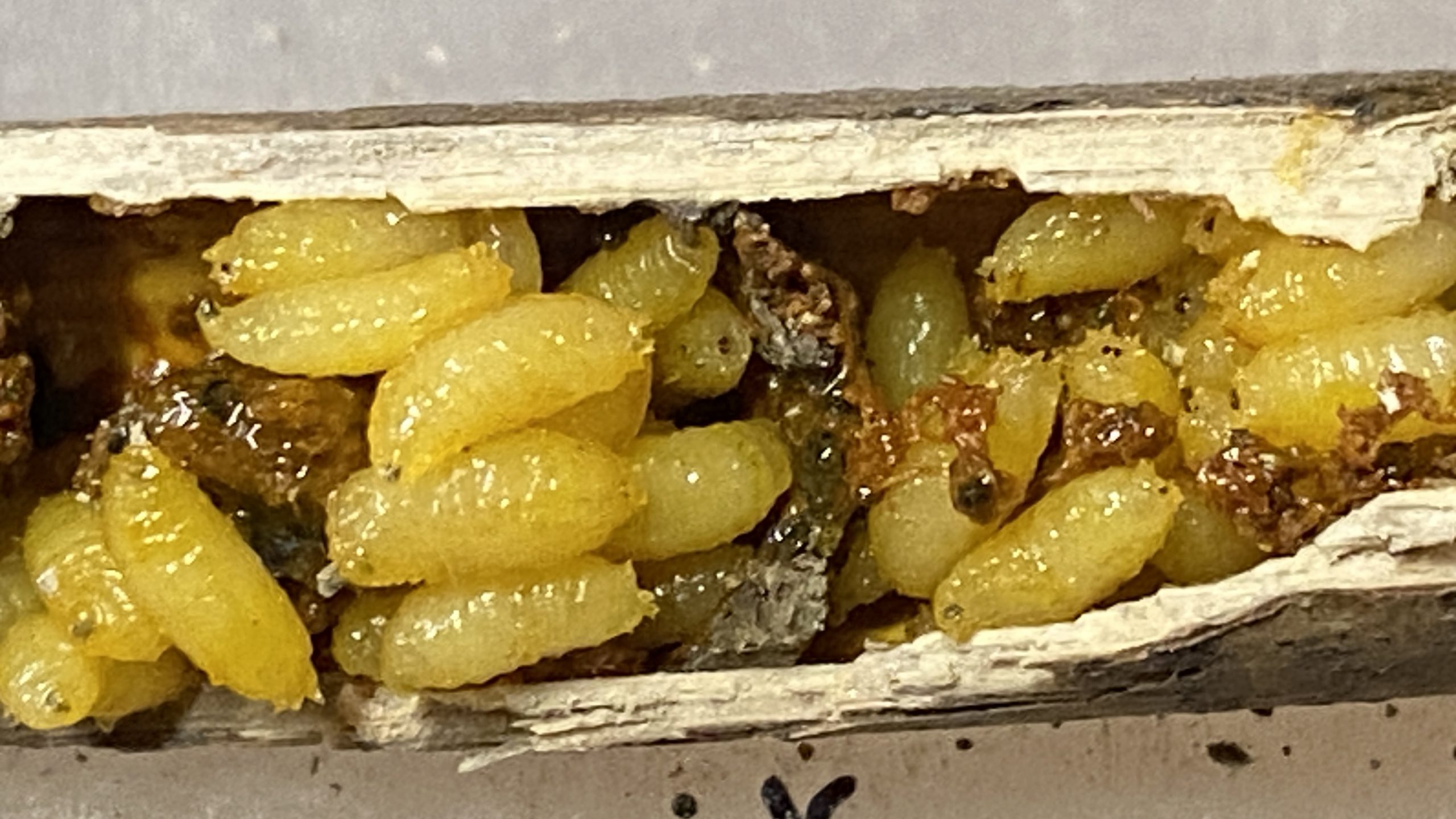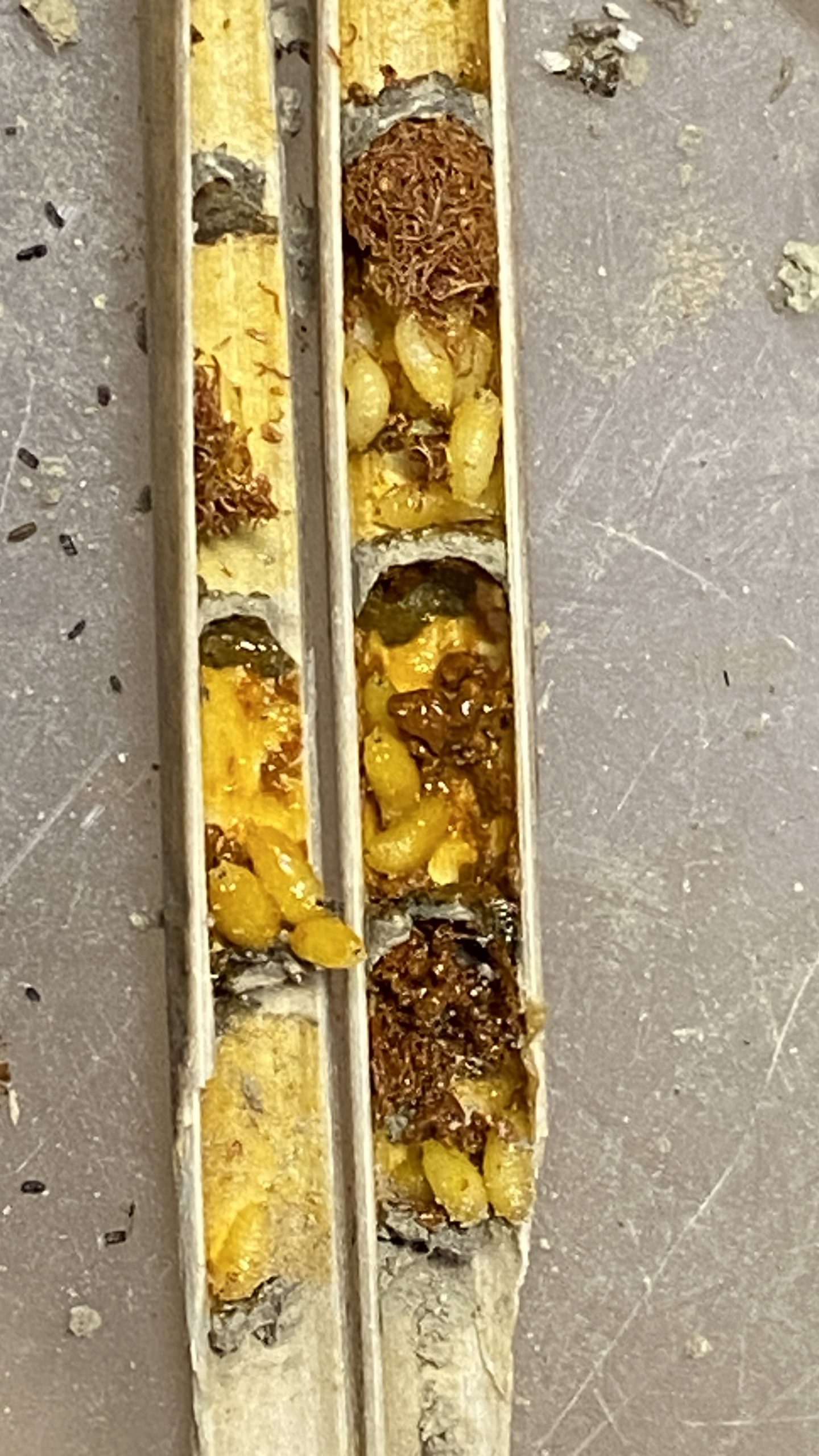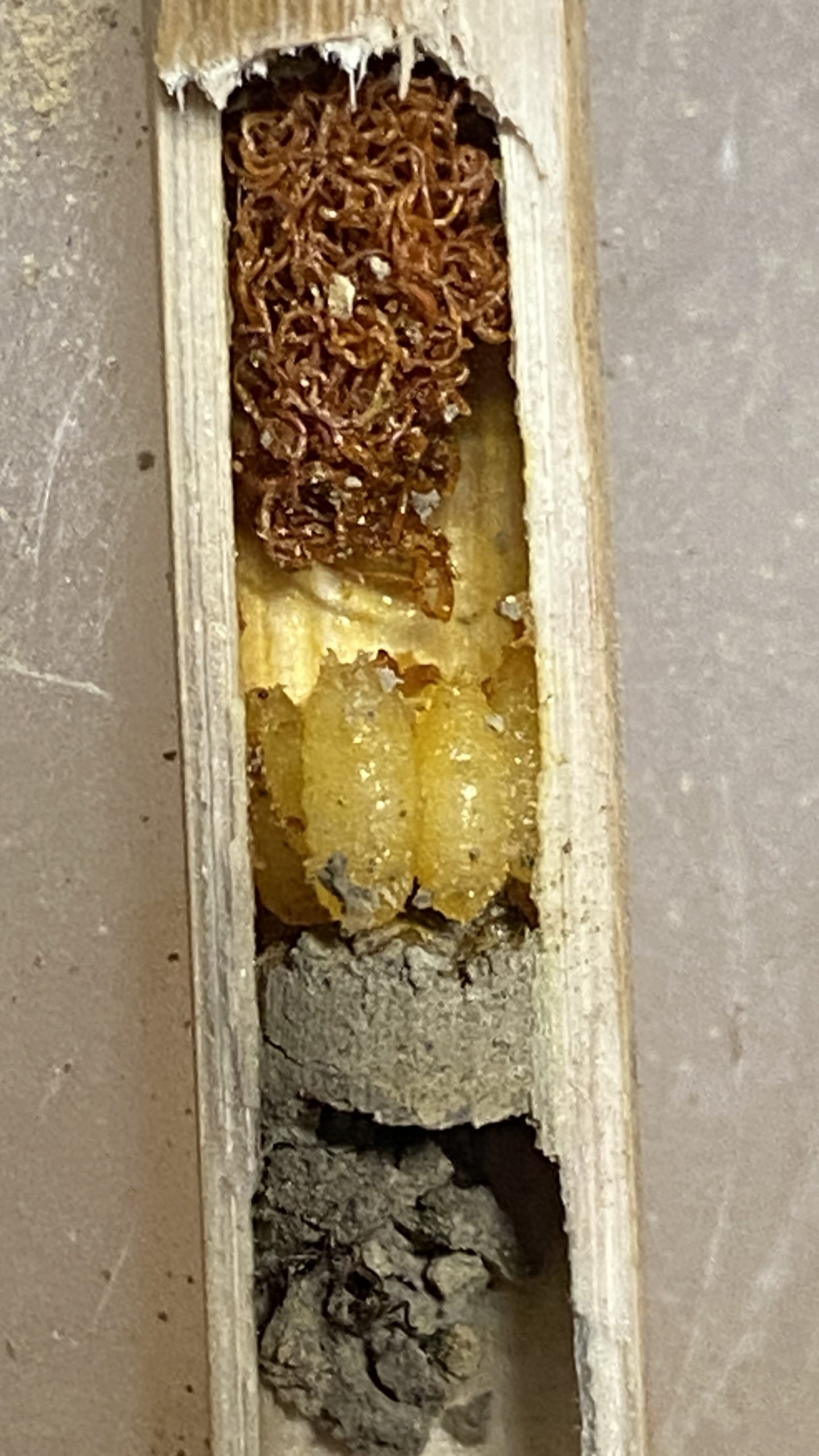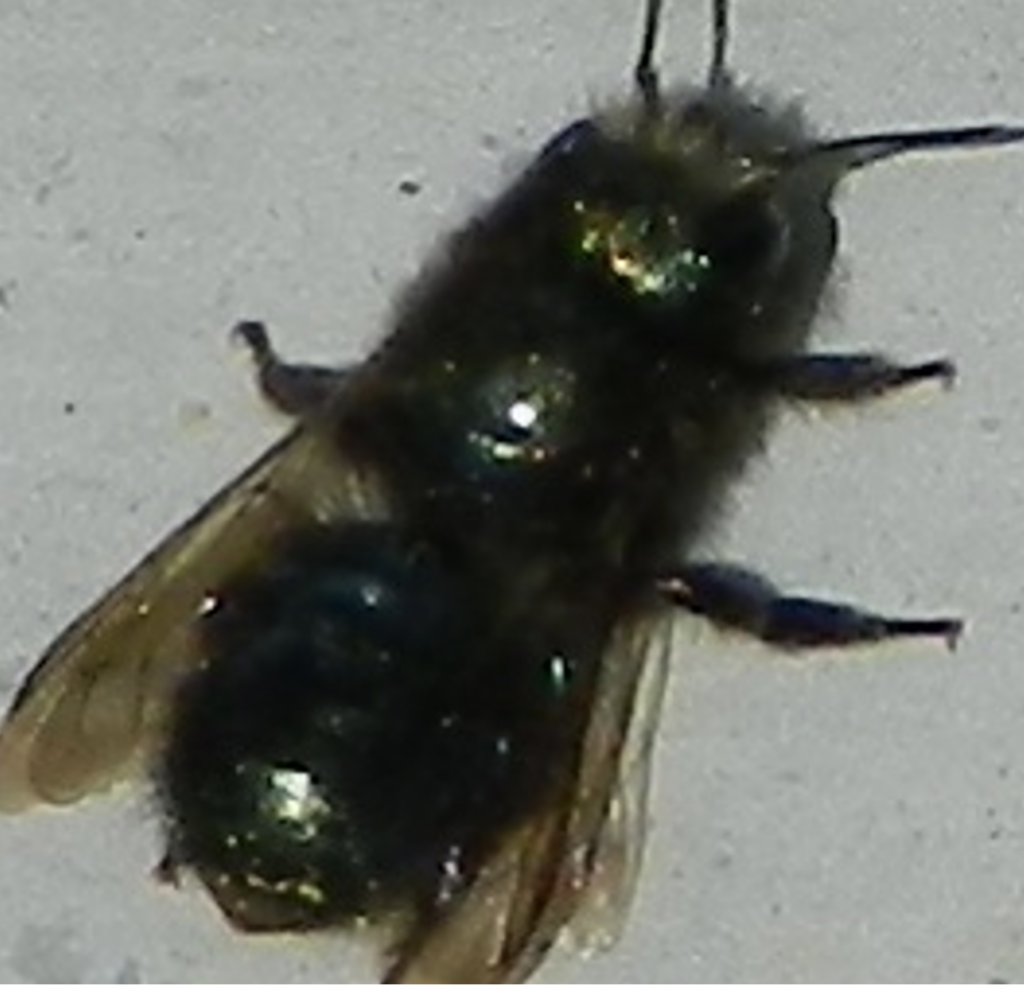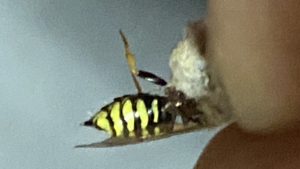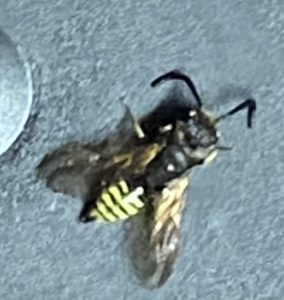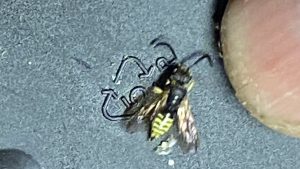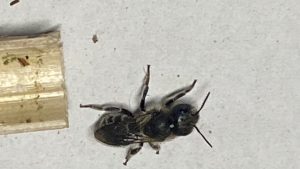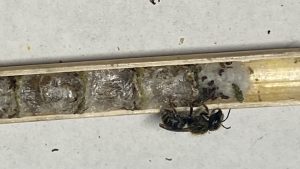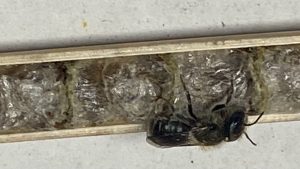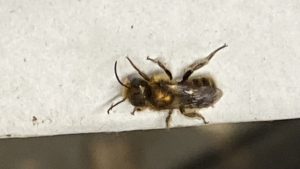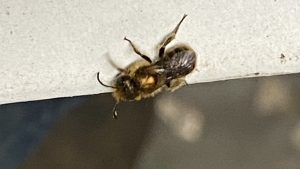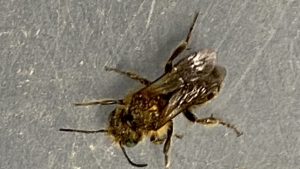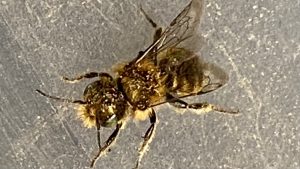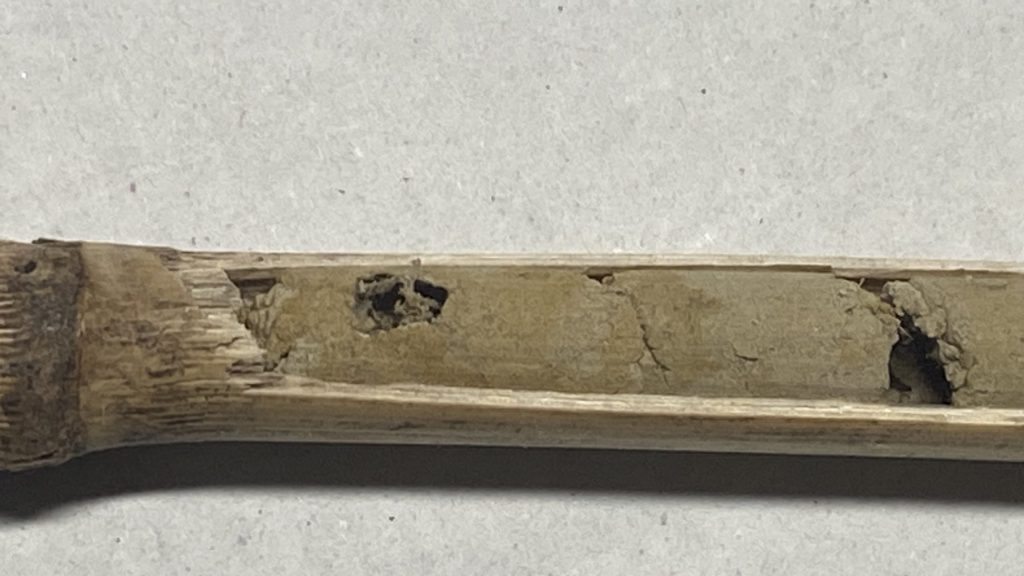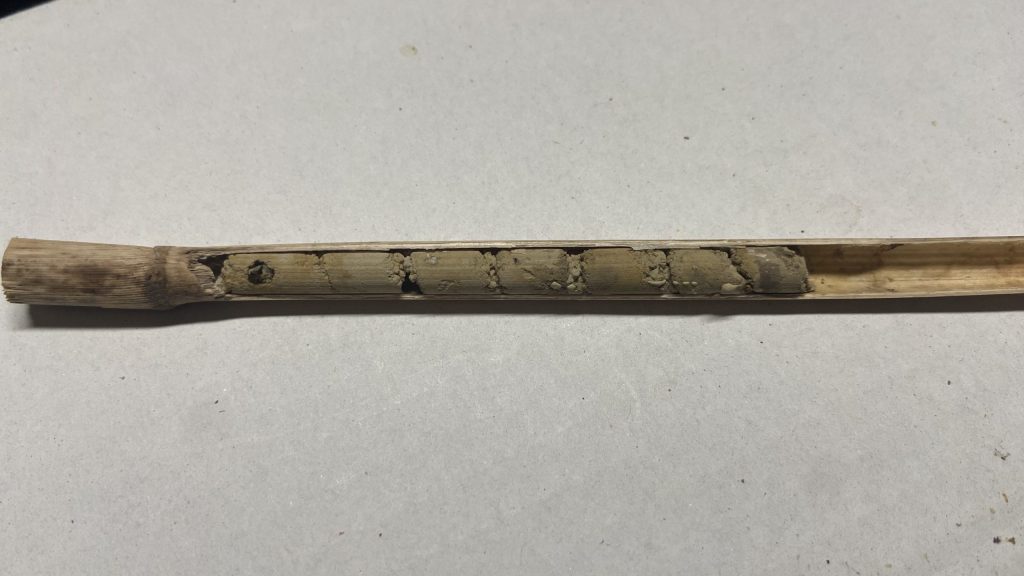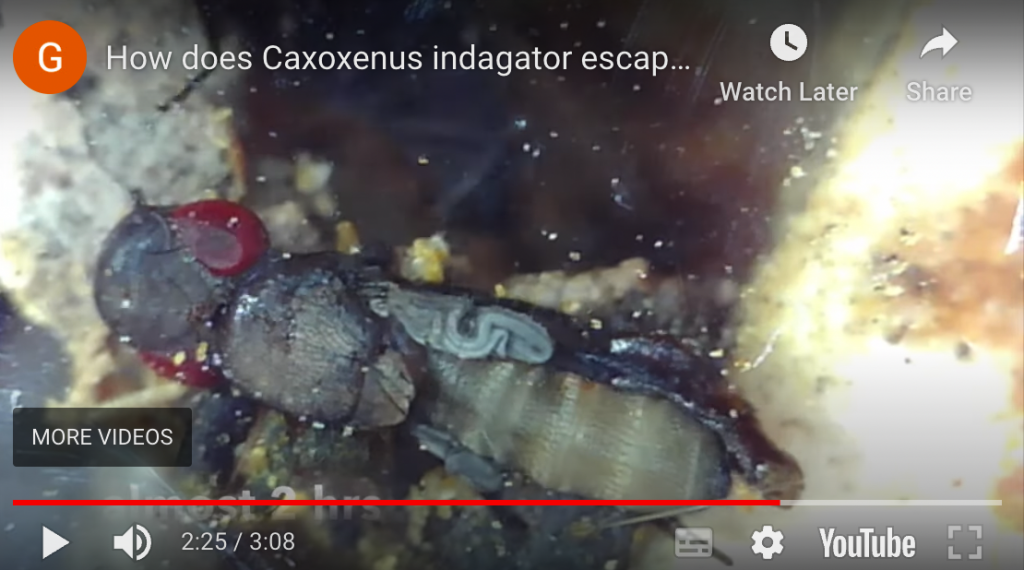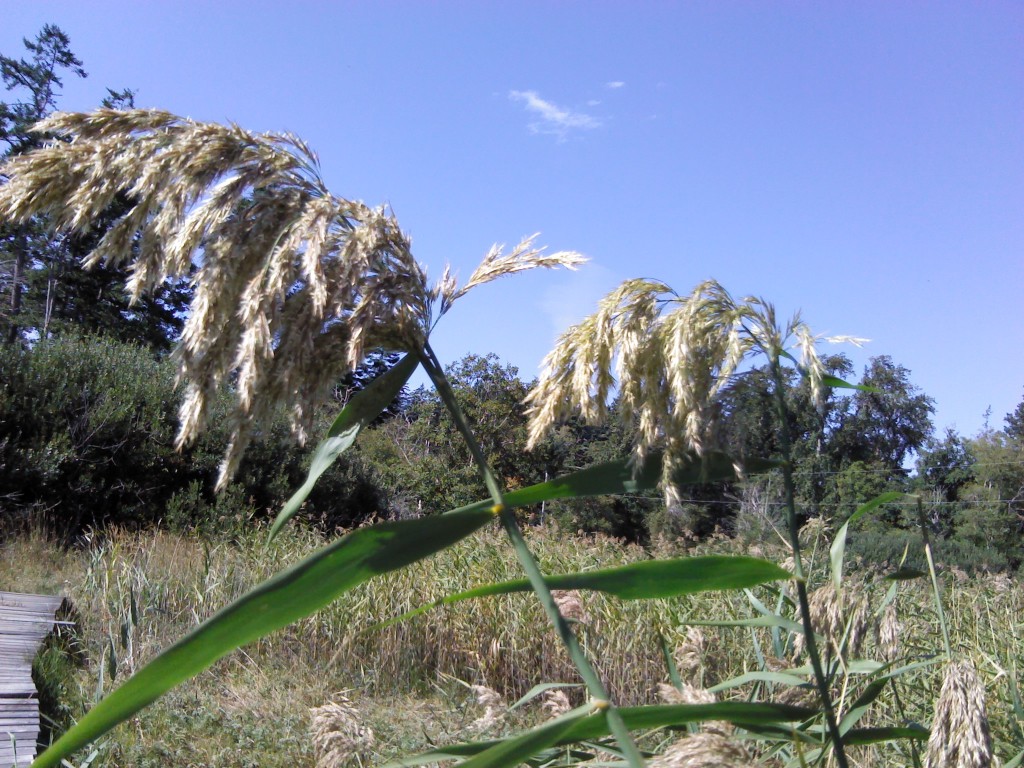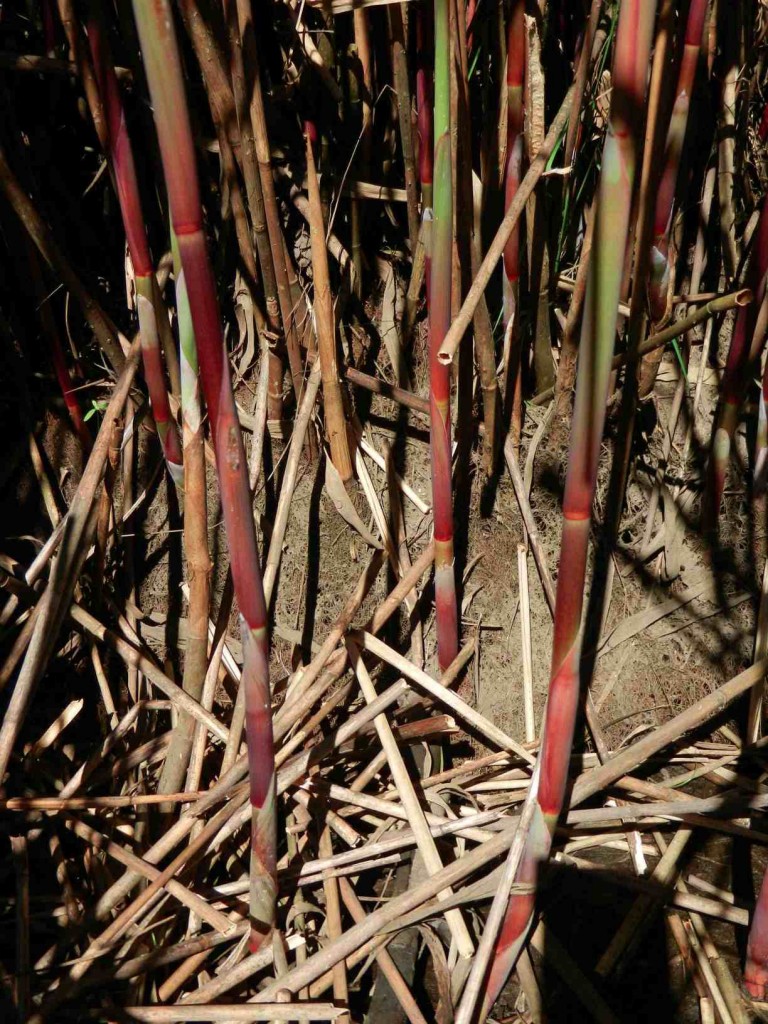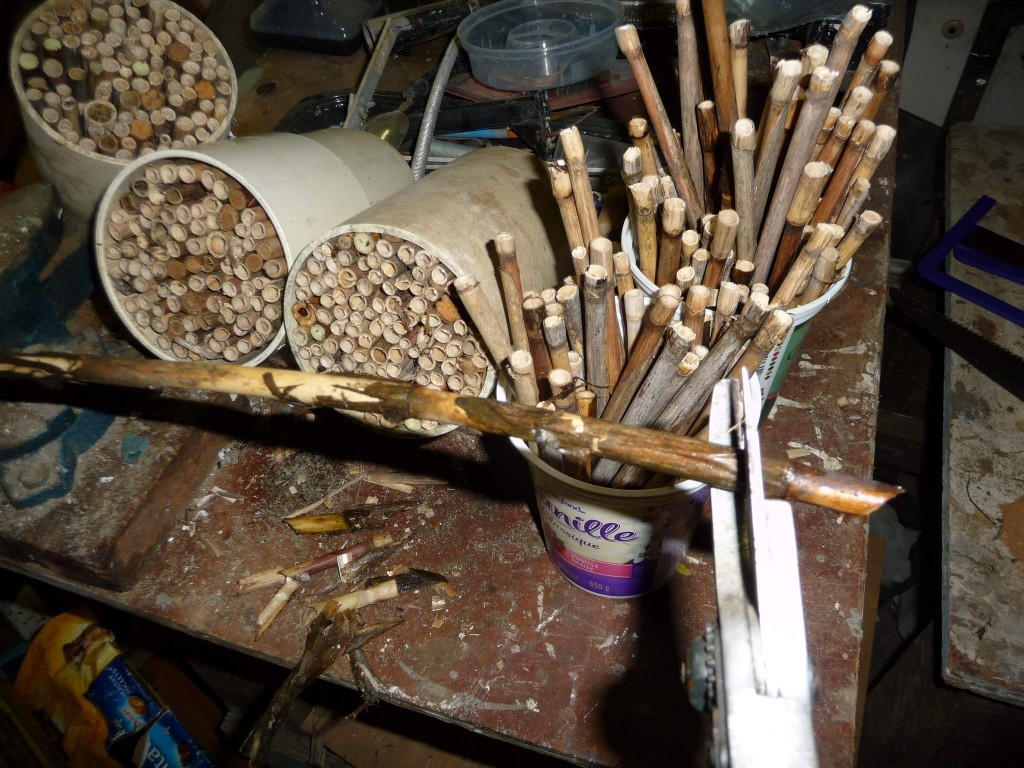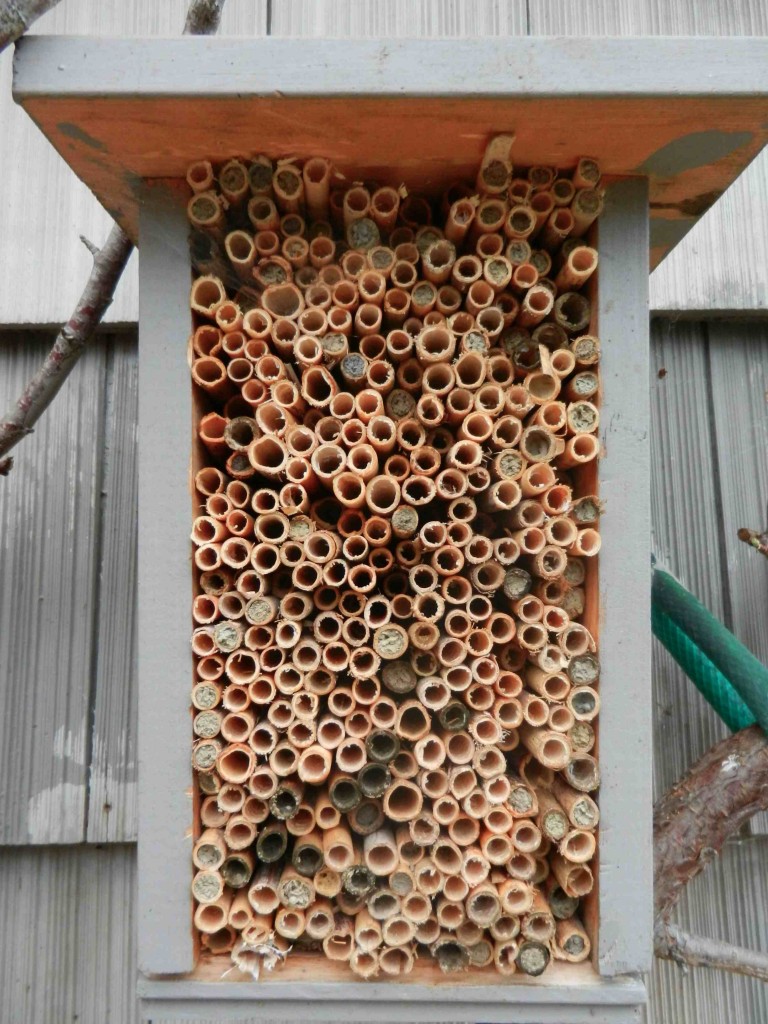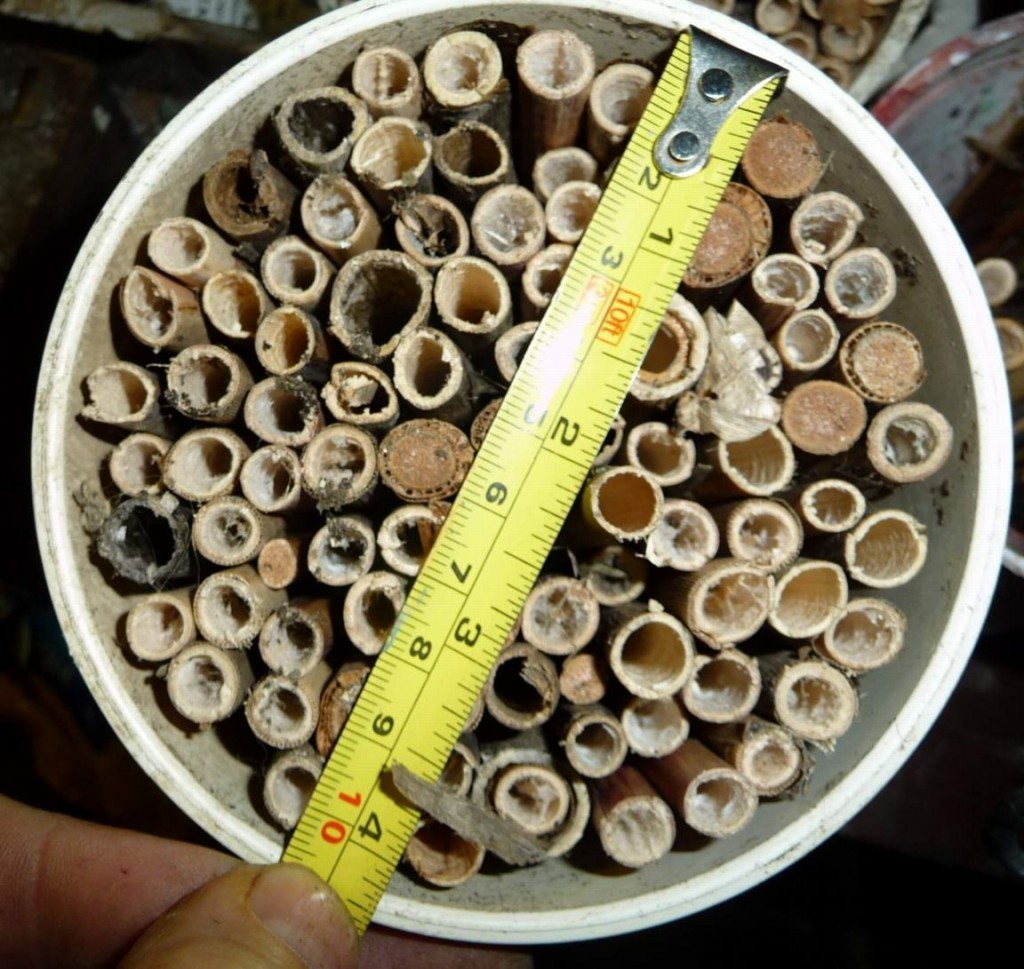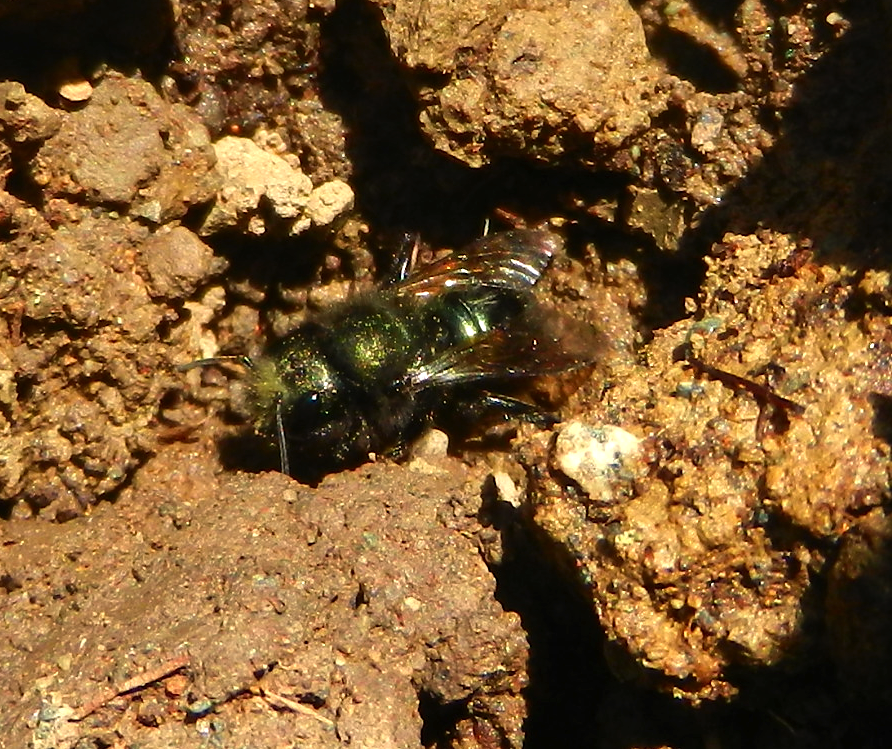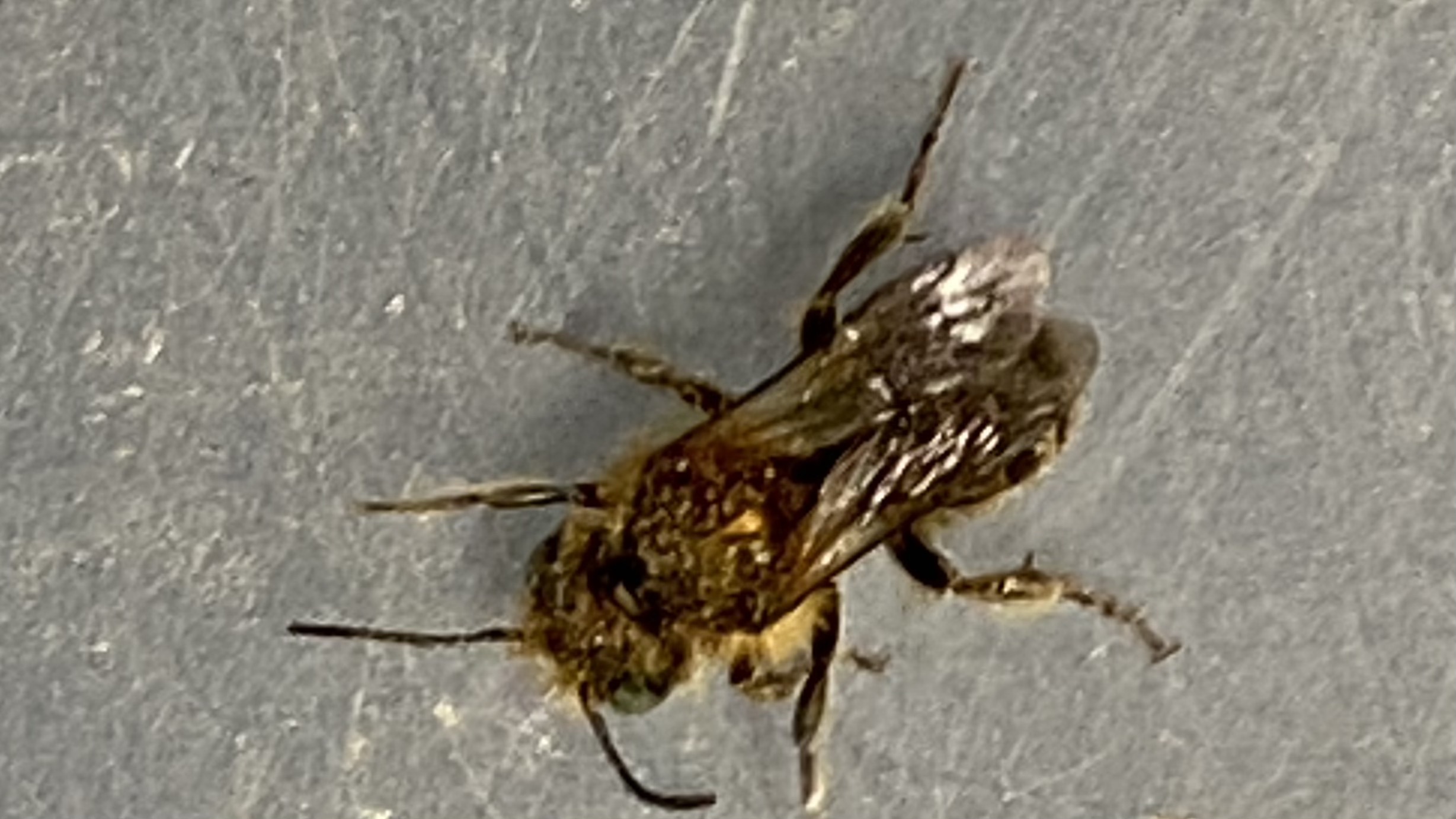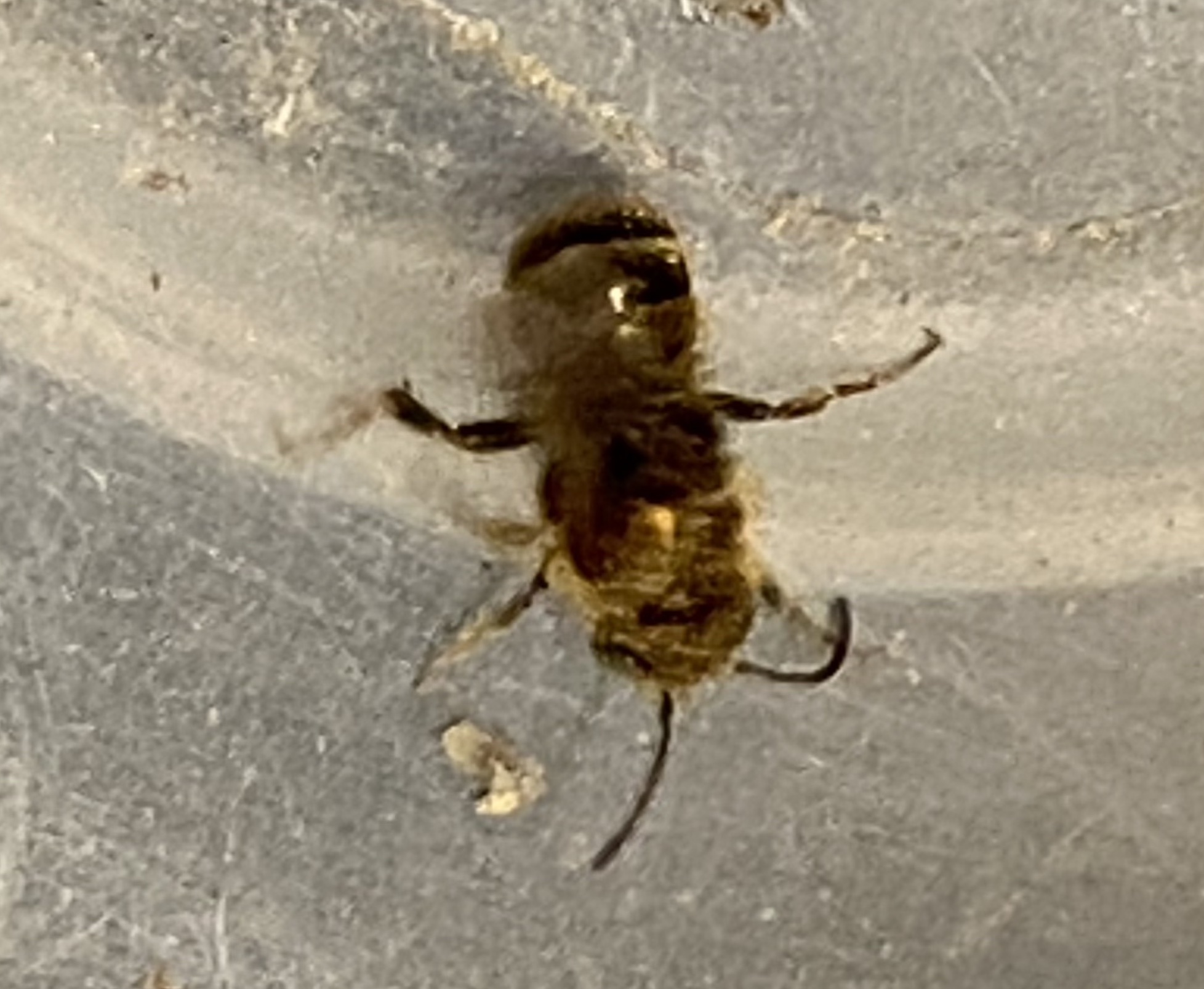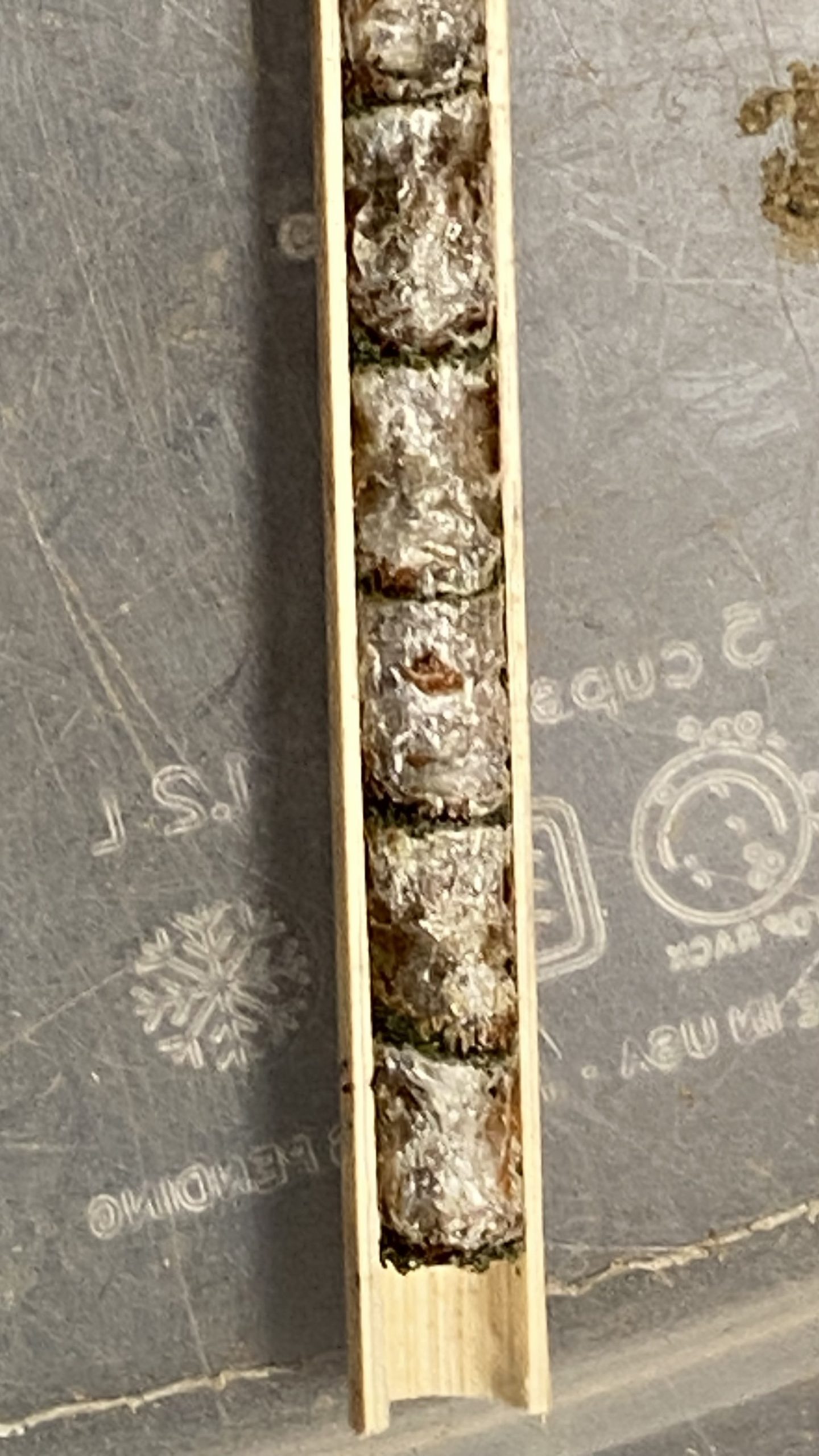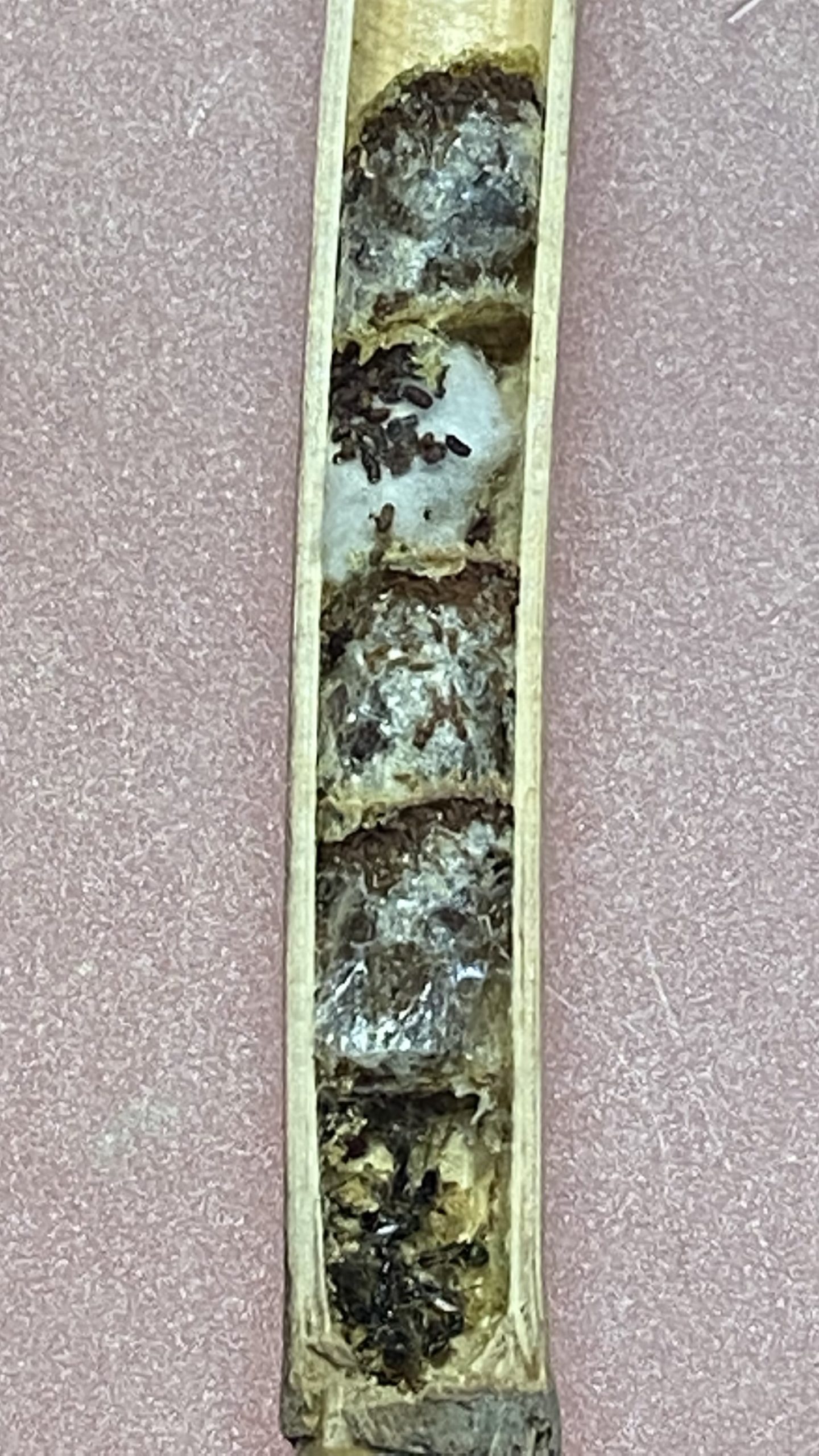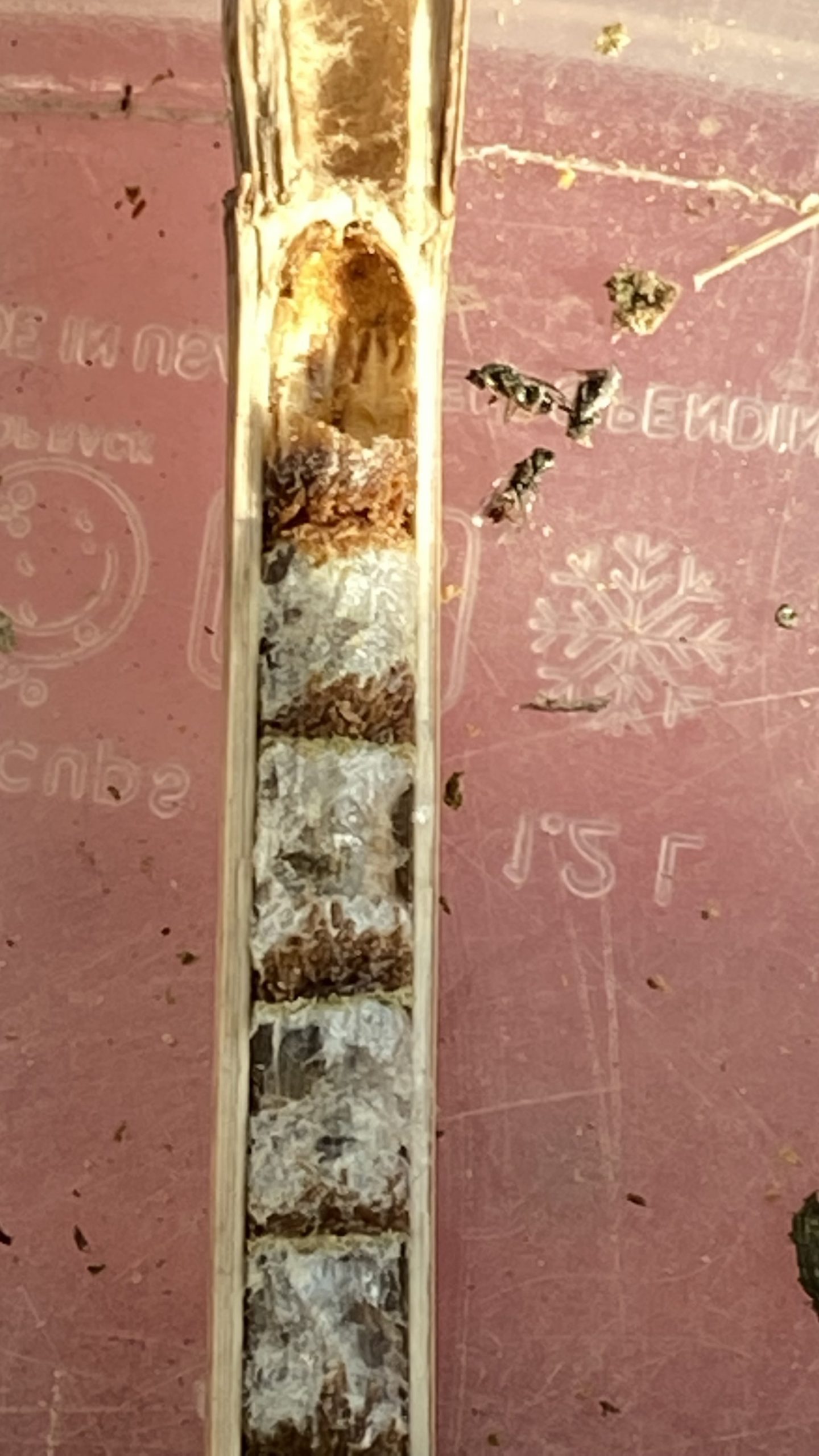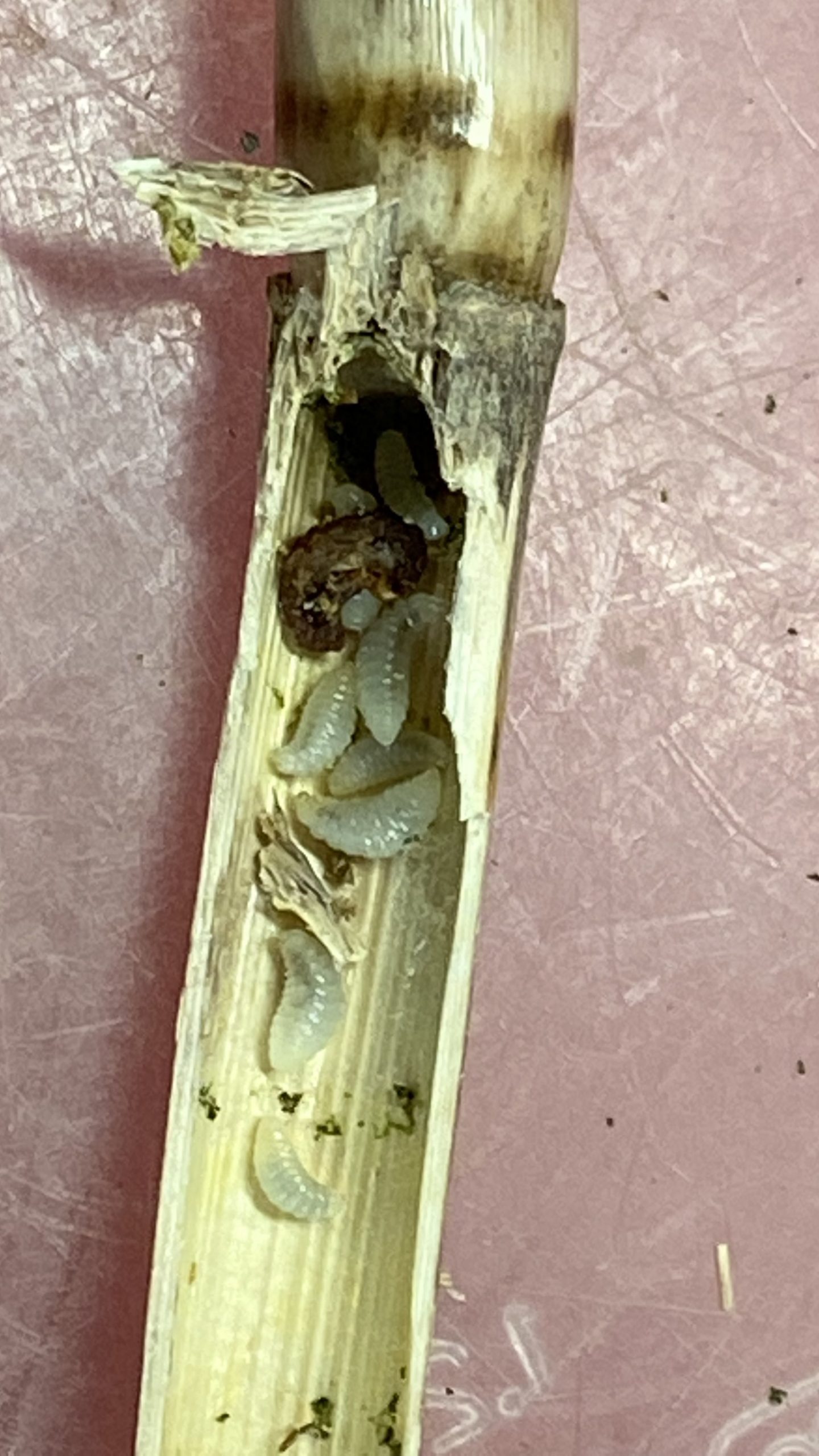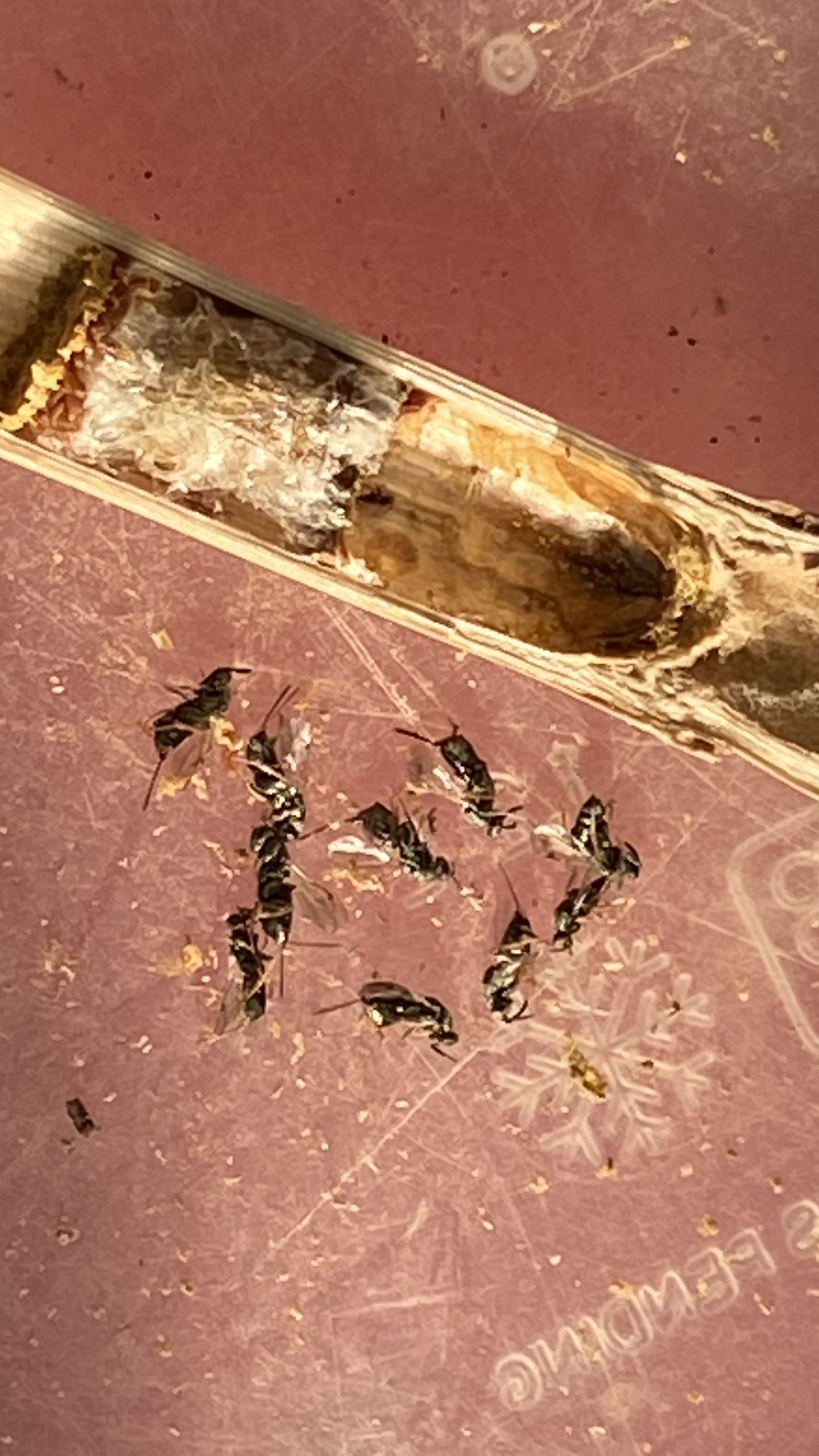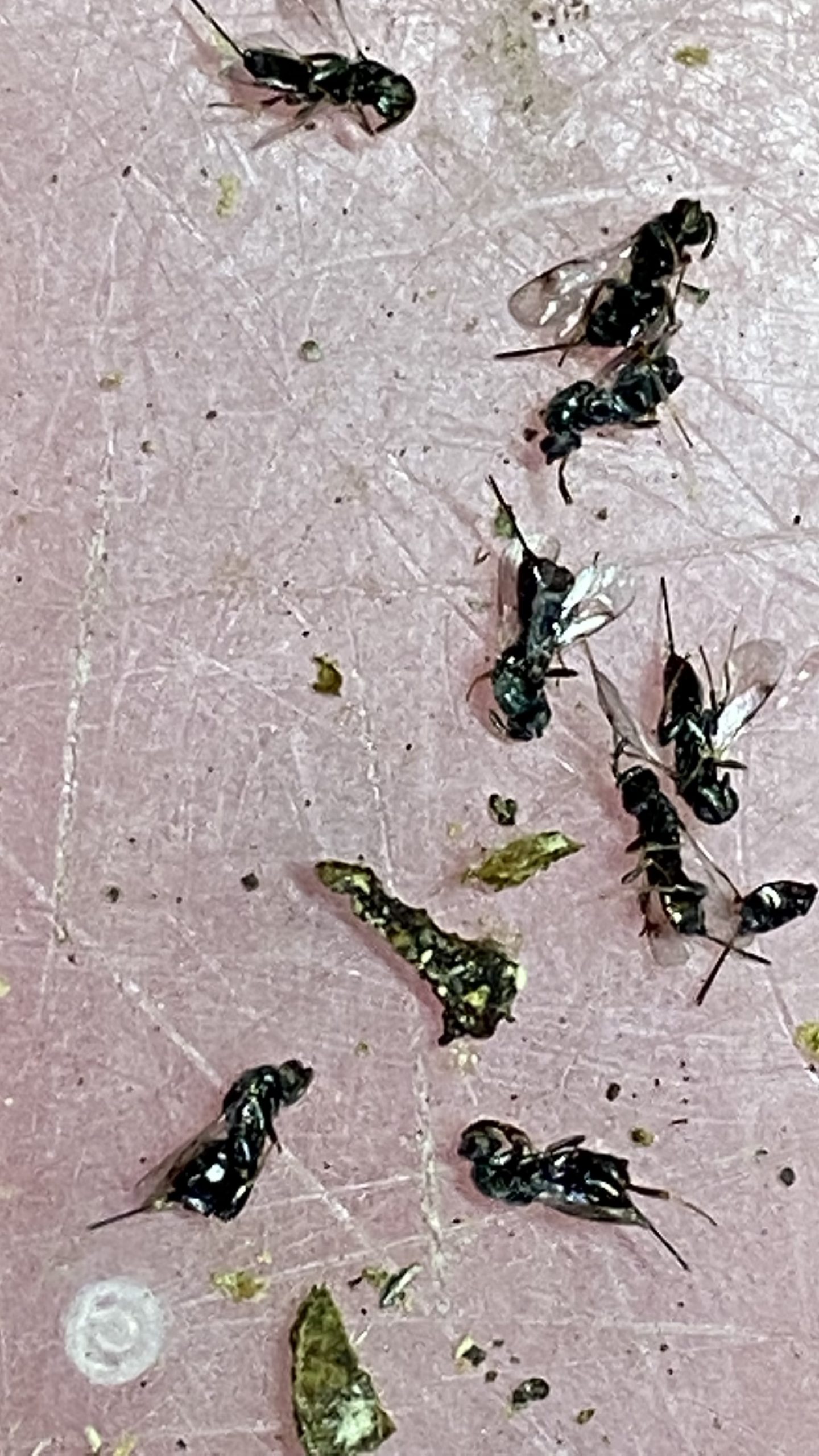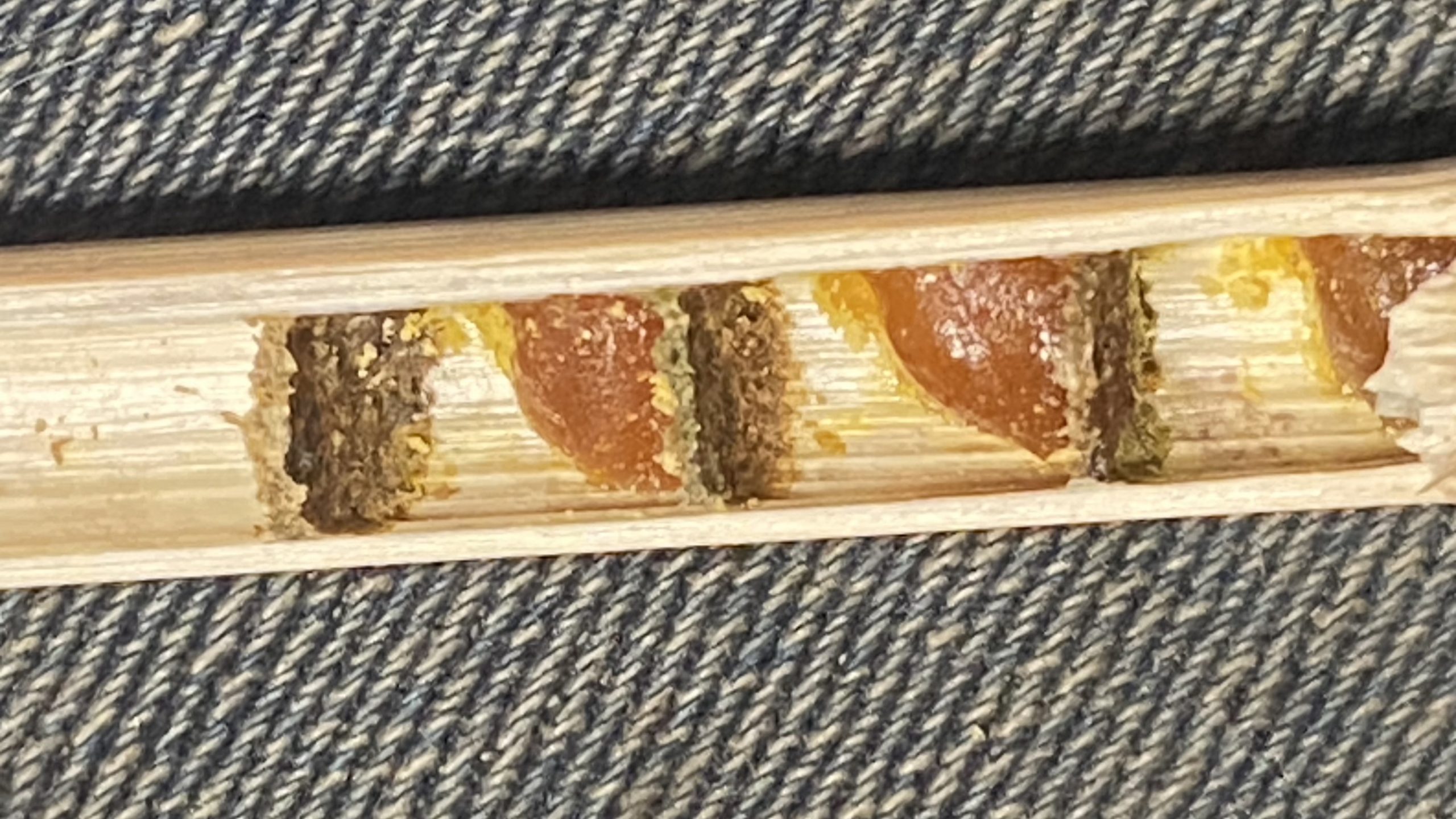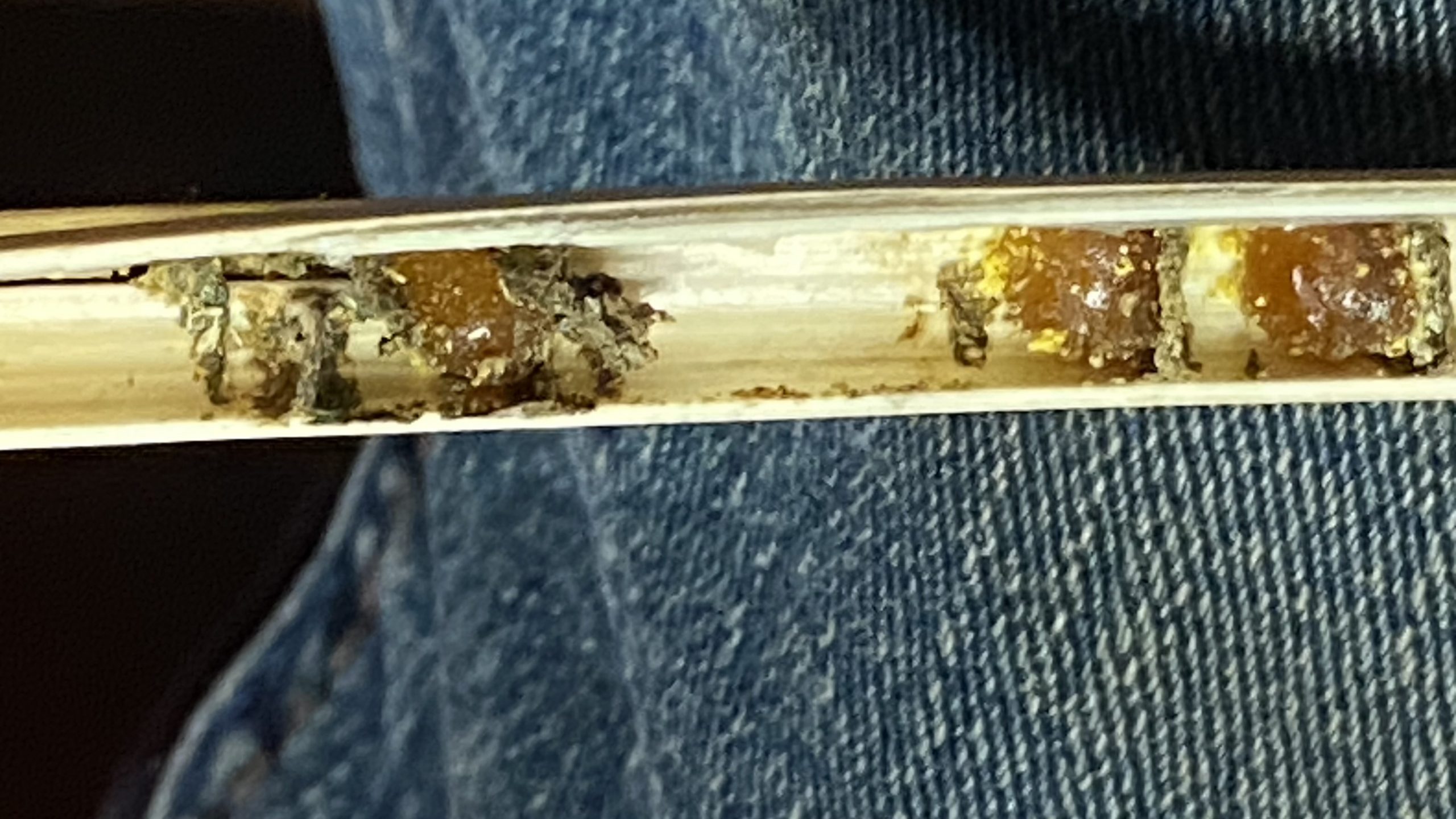This video shows how I took the smaller length sections at the base of a Phragmites stem cut them at the second node and drilled out the middle node to make a longer-sized tube
Author: GarryF
Electron Microscope Images of Honey bee Mites

At the Seedy Saturday on the weekend where I was selling mason bees, I met Dr. Elaine C. Humphrey, Fellow of Microscopy Society of America, and a Past President Microscopical Society of Canada. She works at the Advanced Microscopy Facility.
Bob Wright Science Centre A015, University of Victoria.
Dr. Humphrey has provided the following images she has taken using Scanning Electron Micrography of the Varroa mites that are parasitic in honey bees: ( Varroa mites (Varroa destructor and V. jacobsoni) )colonies.
These mites are similar in name only to the mites that infect Mason bee tubes, Chaetodactylus krombeini, (Krombein’s hairy-footed pollen mite).
According to Wikipedia: ” The common name is somewhat misleading, as pollen mites consume more nectar than pollen. Both their feeding habits and their size differ significantly from Varroa destructor, the mite very harmful to the European Honey Bee. Although both are classified as mites, varroa mites are more closely related to ticks and only distantly related to Chaetodactylus. ”
So you can expect to have hairy-footed pollen mite contamination if you are not conscientious about cleaning out your tubes in the fall. See this reference on mason bee mites:
Climate Change and Mason Bees survivability
In the February 3 2024 Times Colonist there is an article which poses the question about the ability of natural pollinators to withstand temperature swings. Although UBC researcher Alison McAfee is quoted about the effects of high temperatures being hazardous to bumblebee populations since false springs could make the bees emerge prematurely from hibernation, there is a strong possibility that other native pollinators such as mason bees which normally would emerge when daytime temperatures reach 13 degrees C, could also be affected. This is another reason for overwintering your cocoons in a controlled temperature location like a refrigerator. Controlling when you release the bees ensures that they will not be impacted by increasingly dramatic shifts in temperature. (Of course those who don’t look after their cocoons by cleaning out the tubes in the fall and storing the cocoons in a cold location risk more than temperature change, as parasites will probably take control of their bee populations anyway!)
Beware the Houdini Fly!
Last year (2023), I first heard about the Houdini fly and I posted a message here about them occurring in the Duncan Area. Recently while i have been cleaning out my tubes I have found them in two of the locations where I provide bee boxes for my neighbours . One was in the Tower Point area where most of the tubes in one bee house were affected. The other was in the William Head area of Metchosin.
So it is essential that any old boxes with tubes should be eliminated or cleaned regularly if they are going to be reused. The Houdini flay maggots will consume all the cocoons in a tube . They are much larger than the Mono wasp larvae which are always inside a cocoon case. Also note the twisted purple mass of what I assume are feces
Cacoxenus indagator is a species of fruit fly.[1] It is a kleptoparasite, laying its eggs in the pollen-filled nest cells of mason bees.[2] On account of its ability to break out of those cells once hatched, it is commonly known as the Houdini fly.[3][4]
| Scientific classification | |
|---|---|
| Kingdom: | |
| Phylum: | |
| Class: | |
| Order: | |
| Family: | |
| Genus: | |
| Species: |
C. indagator
|
| Binomial name | |
| Cacoxenus indagator | |
Mason Bees for Sale in Metchosin / Victoria / Southern Vancouver Island
Also phragmites reed grass tubes which may be ordered on line are noted
If you are concerned about storage over winter you can also pre-order and pay now… for pickup in February 2024;
Pollinator problems caused by Glyphosate–Round-up pesticides
Glyphosate, the active ingredient in Roundup, is one of the most commonly used herbicides in the world by commercial gardeners. However, many pesticides – including insecticides, fungicides, and herbicides – harm pollinators and other beneficial insects.
 To help educate those in the farming and gardening industries about this toxic chemical, drugwatch.com has created a comprehensive guide with organic, and homemade; and a second guide with agricultural alternatives. please take a look:
To help educate those in the farming and gardening industries about this toxic chemical, drugwatch.com has created a comprehensive guide with organic, and homemade; and a second guide with agricultural alternatives. please take a look:
drugwatch.com/roundup/
Glyphosate
Glyphosate is an herbicide used to kill weeds. It’s the active ingredient in Roundup and other weed killers, and can cause a variety of side effects. Recent lawsuits have claimed exposure to glyphosate in Roundup has led to certain cancers, including non-Hodgkin lymphoma.Alternatives to Roundup
See the article at this link:
https://www.drugwatch.com/roundup/alternatives/
Roundup products contain glyphosate, a chemical linked to cancer and other illnesses. Chemical alternatives to Roundup can also contain toxic ingredients, but safe alternatives to Roundup include soap, vinegar, salt or iron-based sprays, mulching and integrated weed management.
==========================================================
 Also this article explains the problem with pollinators and Roundup:
Also this article explains the problem with pollinators and Roundup:
===============================================================
Some More New Pollinators
The cleaning out of the phragmites tubes in the fall produced some new and interesting species of mason bees and leaf-cutter bees. These small pollinators prefer the small diameter phragmites tubes
The first sample here, a very tiny wasp in a woolly cocoon has been identified by iNaturalist as a Club-horned wasp Subfamily Sapyginae.. I don’t know yet if these are pollinators but I suspect they are .
The next one was a half sized mason bee which came from the silvery meshed cocoons:
Similar in size is a very bronze coloured mason bee, from similar silvery meshed cocoons:
Very different cocoons are these mud encased cocoons.. I have isolated a few of these tubes to see what emerges when they hatch, so I will add photos later here
Also appearing in the phragmites tubes are leaf-cutter bees.. photos to come later
Beware : THE HOUDINI FLY-(Cacoxenus indagator) Kleptoparasite of Mason Bees
Recently there is a concern in the Pacific Northwest about an invasive species, the Houdini Fly (Cacoxenus indagator) . which is a kleptoparasite which invades mason bee homes and destroys the developing larvae and source of food pollen.
Brian Guzda of Brian’s Mason Bees (https://www.instagram.com/briansmasonbees/?hl=en ) provided this picture. Note that the white maggots are not contained within the cocoon as they are with the Mono wasp, another kleptoparasite which I profile in other posts here. It is essential to clean out whatever kind of tubes your mason bees have capped any time from October to December in order to catch these flies before they mature and cause further damage. 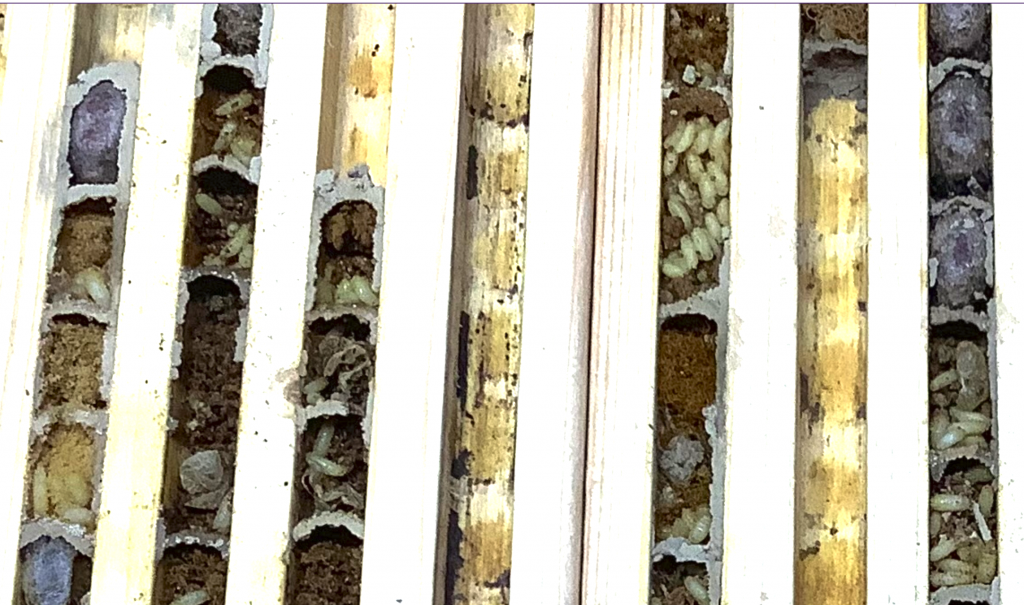
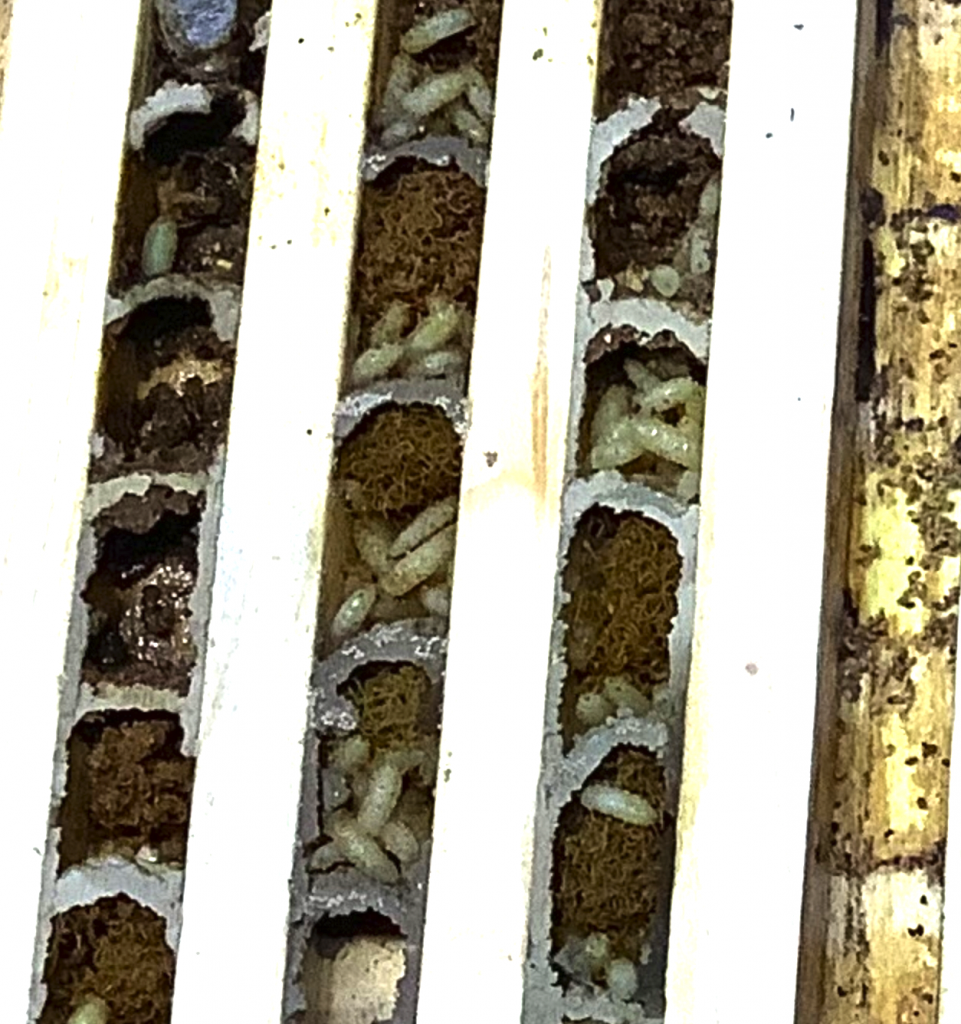
The following video gives more information about this invasive species and emphasizes the importance of taking good care of your bees.
Harvesting Phragmites Reed grass stems from the Marsh for Mason Bee Homes..
I was fortunate to have on our property, a brackish water estuarine marsh in which grows the native Phragmites sp. reed grass.
See this file on the Gooch creek swamp which tells the story of how I had to “save” the Reed Grass beds from extirpation by the BC Forest Lands and Natural Resources Department: (FLNRO)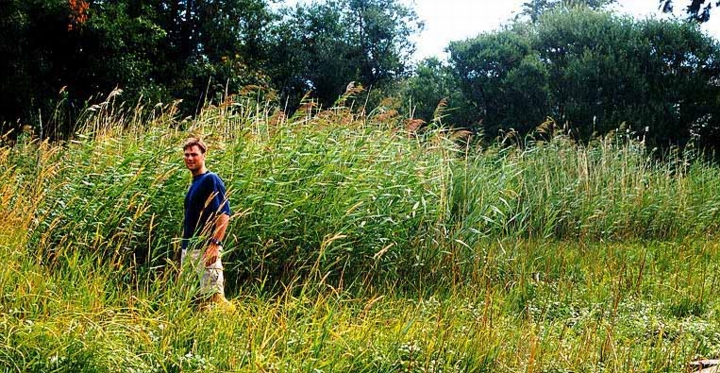 From Phragmites australis (Cav.) Trin. ex Steud. subsp. americanus I get the hollow tubes that I use for the mason bee homes. This is what they look like in late summer.
From Phragmites australis (Cav.) Trin. ex Steud. subsp. americanus I get the hollow tubes that I use for the mason bee homes. This is what they look like in late summer.
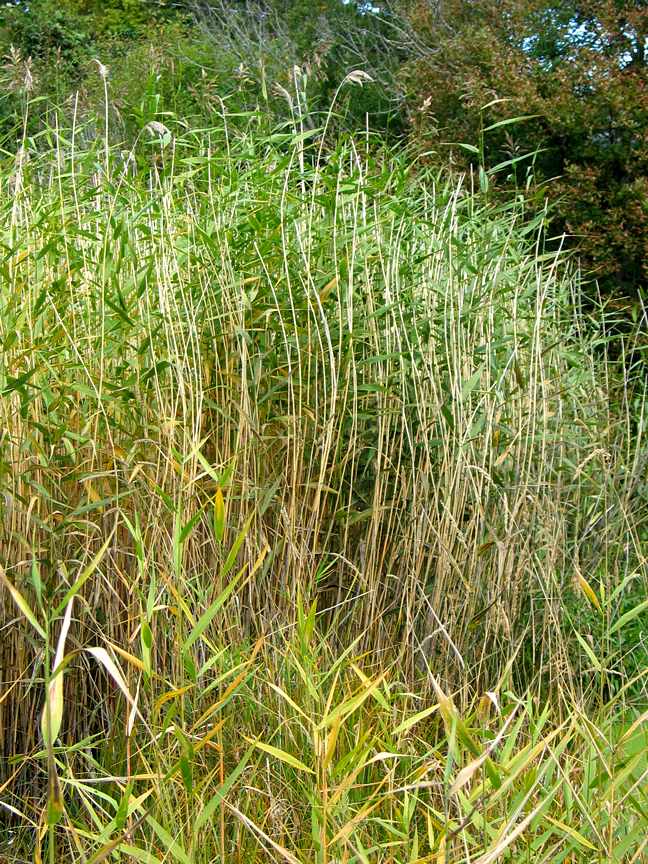
In about 1 in 20 plants, the stems are the ideal size for Mason Bees.
The tubes are cut in the early spring from the lower 1 metre of the stems.
The internode lengths range from 15 cm. to 30 cm . I select only those sections with an adequate tube diameter. 5/16 ” diameter is ideal.
Since this reed grass is not generally available, it is easiest to sandwich small plates of wood with 5/16″ channels routered or sawn into them . There are many references on the internet that show how to do this.
See this post on Harvesting and Cleaning the Mason Bees in the fall.
New species of mason bee showing up in some Phragmites tubes from last year

The past season was not a good one for mason bees on southern Vancouver island. Cool temperatures delayed hatching and there was poor fertilization in some of the locations . I had mason bee houses stocked with Phragmites tubes and mason bee cocoons in eight different farms of neighbours.
As I have been cleaning out the tubes and getting the cocoons in the refrigerator for storage, I have noticed a significant increase in a species of native mason bee that is much smaller than the native blue orchard bees.
Another interesting observation. was that at the bottom of the tube below the cocoons in several tubes there was a pocket of the dead but hatched parasitic mono wasps.. I cant explain that one (my best hopes would be that this smaller mason bee cocoon has some super power over the parasitic wasps…lol)
